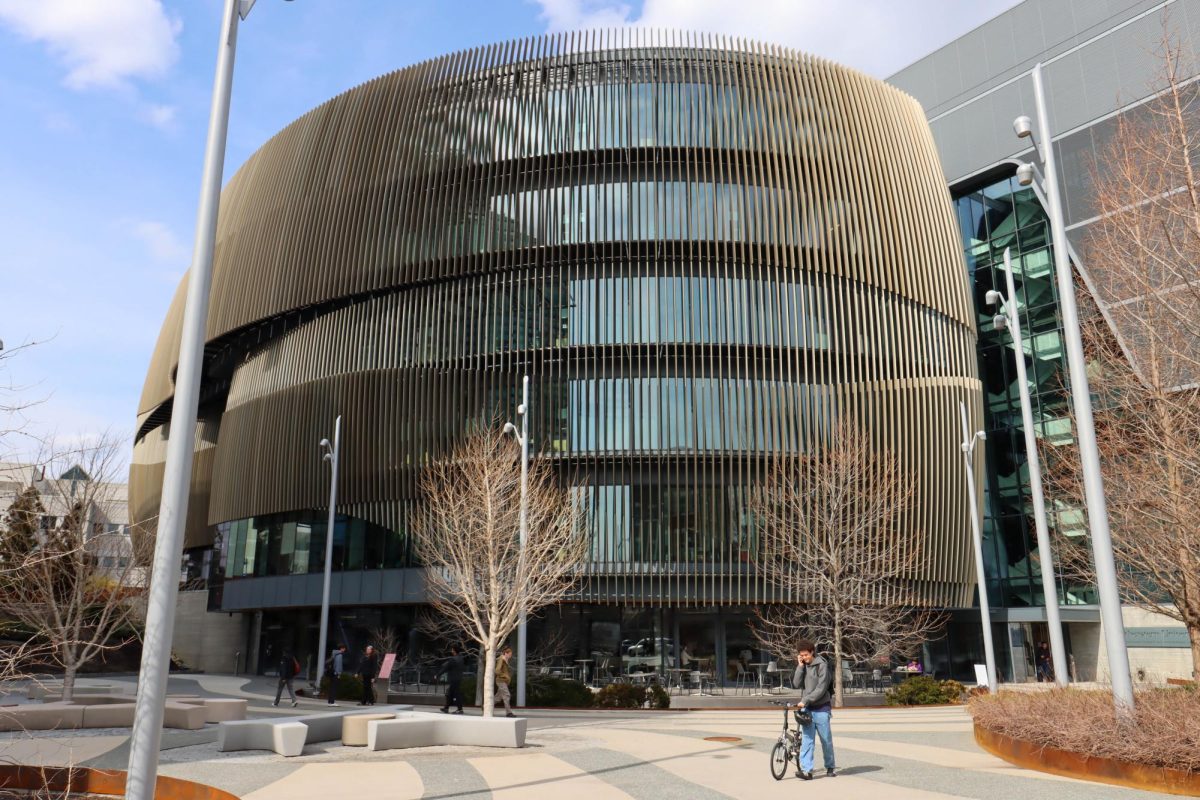By Adriana Campos
Forget pilates and yoga. One of the most recent trends to hit fitness circles nationwide is trading sweaty spandex for wet bathing suits. Swimming laps in the pool, once considered the only aquatic exercise available, has evolved into underwater exercises that have gained popularity in recent years.
Because of the low-impact activity involved in underwater workouts, aqua fitness routines have found most of its fans to be older men and women and expectant mothers, who can enjoy a relaxing yet enriching workout without worrying about the damage that can sometimes occur during vigorous workouts.
Boston University and Boston College have both implemented underwater exercise classes into their fitness schedules. While the colleges maintain free swim hours as well as instructional swimming sessions to enhance overall cardiovascular health, they have also added aqua aerobics courses to their programs.
Participants are usually aided by products specially designed for aqua aerobics workouts. Strapping on specially designed aquatic belts, gloves and other body wear, or using underwater hand weights, aqua aerobics students are typically guided through a variety of motions which, combined with the water’s buoyancy and natural resistance, provides a complete, yet low-impact workout.
AquaJogger.com offers a variety of products targeted specifically at people who maintain their own aqua aerobics workouts or for instructors who teach water fitness classes. Besides selling products aimed at toning legs, arms and abs, the site also provides descriptions and drawings of various aqua aerobics exercises.
Northeastern University’s Campus Recreation Department does not currently offer aqua fitness or aqua aerobics classes.
“We attempted to [implement an aqua fitness program] at certain points. We’ve thought about it. But scheduling is very hard with all the group fitness classes that go on,” said Kristen Miller, NU’s Fitness Director.
“One problem is that we’d have to compete with pool times and peak class hours. We’d have to schedule around swimming, diving team practices and free swim time.”
Because a majority of the population who utilize aqua fitness classes typically avoid high-impact workouts, the possibility exists that aqua aerobics classes at NU would receive, at best, mild enthusiasm among students, Miller said.
“This is not the population that takes this type of class. It’s usually more beneficial for an older crowd, people with arthritis, osteoporosis, people who are not as fit as the college population. But I do think there would be a niche for it,” Miller said.
Freshman behavioral neuroscience major Stefanie Montalto sees the benefits in aqua fitness.
“I would definitely take aqua fitness classes,” Monalto said. “Aqua fitness would be a great way to get in shape, because the water offers you more resistance than the air does.”
Some students do not feel an aqua aerobics class would be necessary.
“I can do aerobics without water. I don’t find it necessary to put on a bathing suit,” said Naveen Anwer, a sophomore journalism major. “I don’t know much about it but it doesn’t really sound like something that I would be interested in.”
Miller does have hope for starting up future aqua fitness classes.
“We are looking at it, but it probably won’t happen until the next school year,” Miller said.
Until then, students can take advantage of free swim hours at the Barletta Natatorium located within the Cabot Center, or pay a membership fee to attend on-land aerobics classes at the Marino Center. The Boston Athletic Club currently offers Aqua aerobics classes to members and guests. For membership information, contact the club at (617) 269-4300 or membershipinfo@bostonathleticclub.com.








